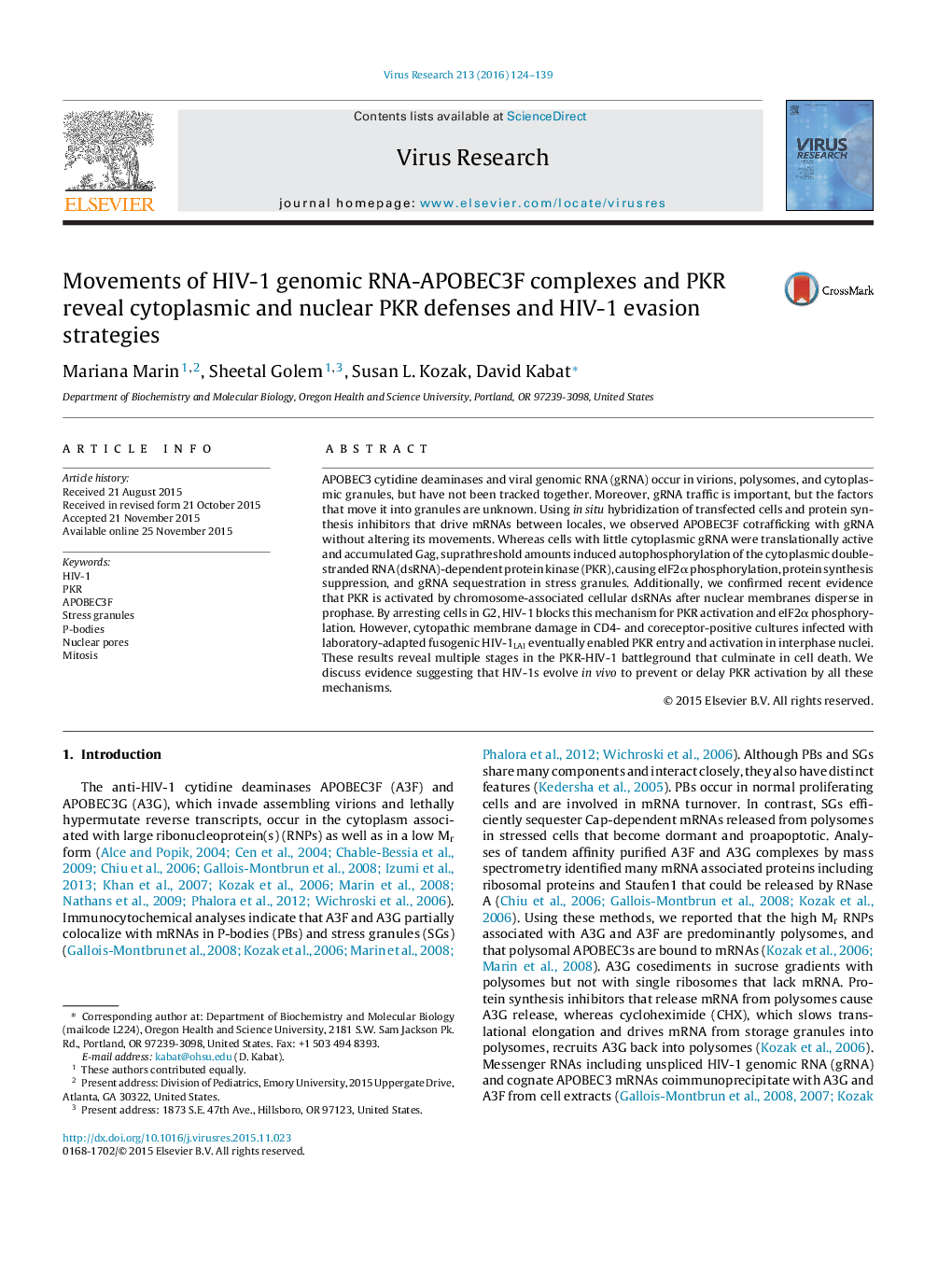| Article ID | Journal | Published Year | Pages | File Type |
|---|---|---|---|---|
| 3427902 | Virus Research | 2016 | 16 Pages |
•Cytoplasmic gRNA granules are DDX6-positive stress granules rather than P-bodies.•Cytoplasmic APOBEC3F cotraffics with gRNA without altering its movements.•Suprathreshold gRNA concentrations activate PKR, driving gRNA into stress granules.•By arresting cells in G2, HIV-1 blocks PKR activation by chromosomal dsRNAs.•Membrane damage in HIV-1 infected cells enables intranuclear PKR activation.
APOBEC3 cytidine deaminases and viral genomic RNA (gRNA) occur in virions, polysomes, and cytoplasmic granules, but have not been tracked together. Moreover, gRNA traffic is important, but the factors that move it into granules are unknown. Using in situ hybridization of transfected cells and protein synthesis inhibitors that drive mRNAs between locales, we observed APOBEC3F cotrafficking with gRNA without altering its movements. Whereas cells with little cytoplasmic gRNA were translationally active and accumulated Gag, suprathreshold amounts induced autophosphorylation of the cytoplasmic double-stranded RNA (dsRNA)-dependent protein kinase (PKR), causing eIF2α phosphorylation, protein synthesis suppression, and gRNA sequestration in stress granules. Additionally, we confirmed recent evidence that PKR is activated by chromosome-associated cellular dsRNAs after nuclear membranes disperse in prophase. By arresting cells in G2, HIV-1 blocks this mechanism for PKR activation and eIF2α phosphorylation. However, cytopathic membrane damage in CD4- and coreceptor-positive cultures infected with laboratory-adapted fusogenic HIV-1LAI eventually enabled PKR entry and activation in interphase nuclei. These results reveal multiple stages in the PKR-HIV-1 battleground that culminate in cell death. We discuss evidence suggesting that HIV-1s evolve in vivo to prevent or delay PKR activation by all these mechanisms.
